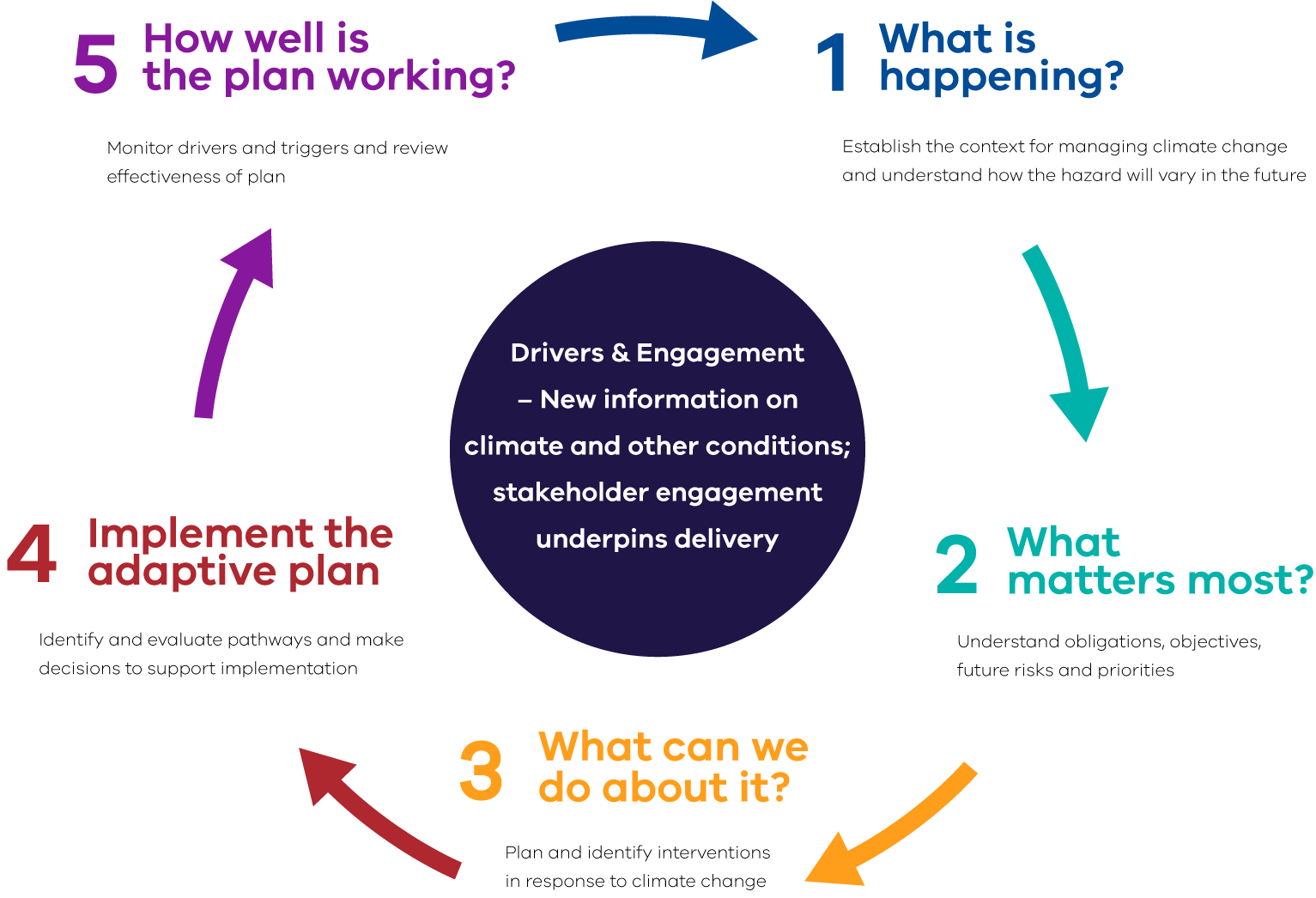Victoria’s climate is changing. Victoria’s wastewater and sewage infrastructure is vulnerable as Victoria’s climate continues to get warmer and drier and as we experience more extreme events.
The Guidelines for the Adaptive Management of Wastewater Systems Under Climate Change in Victoria will assist water corporations responsible to address the risks they face from a climate that continues to change. These climate risks can be categorised in two main ways:
Physical impact climate risk: these risks result from the physical effects of climate change (such as increased temperature, sea level rise, etc). These risks can impact the condition, function, and operating life of a water corporation's assets and infrastructure, their staff, and their customers. They can also affect the natural environments with which these water corporations interact.
While the guidelines primarily focus on physical impact risks from climate change, they also provide insights into transition risks.
Transition climate risk: the transition towards net-zero emissions challenges business-as-usual ways of working. This may pose risks for water corporations if they are not well prepared for changes in regulatory obligations related to greenhouse gas emissions, increasing customer expectations on the delivery of water services with less impact on the climate, and more.
Adaptive planning leading to long-term resilience to climate change
Adaptive planning frameworks are a great tool to help water corporations plan for long–term resilience in response to a changing climate. They are increasingly being used by water corporations in strategic planning for water resource augmentation and major wastewater treatment facilities. The approach complements existing business planning processes.
These guidelines are structured around an adaptive planning framework. This is intended as a prompt for water corporations to consider using this approach in wastewater system planning and to highlight where and how climate change may be considered in the planning cycle.
A five step adaptive planning process for better decision making
Based on an adaptive planning framework, the guidelines use a five-step process (see graphic below) to support Victoria’s 18 water corporations to understand and assess the impacts of climate change on wastewater systems, identify the strategies and actions needed to address these impacts, and then implement those strategies and actions.
Guidance on the use of adaptive planning is provided in Section 5 of the guidelines.

These guidelines complement existing climate change guidelines on water availability in Victoria
These guidelines complement the Water availability in Victoria guidelines (PDF, 8.3 MB), helping to ensure Victorian water corporations are planning both for the impacts from climate change on water availability, and on their wastewater and sewage systems.
water availability guidelines:
- provide tailored guidance on how to apply climate science for water availability planning;
- promote a consistent approach to climate change impact assessment for water supplies; and
- enable more efficient climate change impact assessments.
Page last updated: 12/01/24
